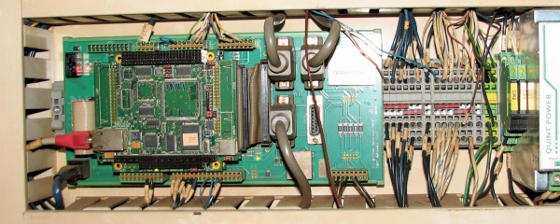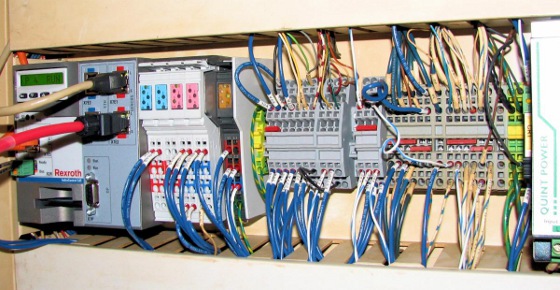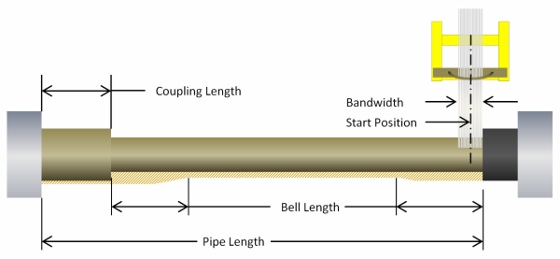 |
| March 10, 2020 | Volume 16 Issue 10 |
Designfax weekly eMagazine
Archives
Partners
Manufacturing Center
Product Spotlight
Modern Applications News
Metalworking Ideas For
Today's Job Shops
Tooling and Production
Strategies for large
metalworking plants
How open platform CNC controls and software improved a fiberglass filament winding machine

The Duoline plant in Texas produces fiberglass tubular liners for the oil and gas industry using filament winding machines.
When Duoline Technologies had challenges with the winding equipment used to produce its RICEWRAP product, a protective wrap of fiberglass epoxy externally applied and bonded to steel pipe for external corrosion protection on downhole tubing, it turned to filament winding controls expert Prodigm for help.
At first, the Duoline team tried to get assistance from the manufacturer of its equipment to reduce the waste of resin and gain better control over of the winding pattern. "Final wrap was too bumpy for our quality standards," said Eric Nichols, senior process consultant and business development manager at Duoline.
The OEM was not as helpful as expected.
"The manufacturer ended up backing out of this type of support, so we started to look for outside help," said David Marshall, the company president at the time. Marshall then asked a Duoline product engineer to explore options to get the machine running efficiently. The engineer reached out to a wide range of large, mid-sized, and small filament winding companies. They narrowed the field down to the three best solutions.
After interviewing and evaluating each option, Duoline chose Prodigm, because the Colorado-based company was more focused on resolving the challenges Duoline was facing than selling any particular product. What Prodigm did instead was to put together a well-thought-out, specific solution for Duoline with a commitment to take care of the entire installation of their hardware and software from cradle to full production.
The team also felt that Prodigm's standardized solution, which implements only commercial off-the-shelf (COTS) components, would enable Duoline to have full control over its process. It would also eliminate the problems they were dealing with as a result of being tied to the custom/closed/non-COTS control platform at the heart of their current manufacturing process.
"When equipment manufacturers start ignoring your request for support after selling you a machine, it is like being held for ransom," said Marshall. "It was a great decision for us to have Prodigm retrofit our machine.
"Afterwards, we were finally in control of our production line. We no longer had to worry if the manufacturer would show up to fix our down machine."
For example, the old control for the filament winding machine that Prodigm replaced is shown in the photo below. The custom circuit board is a closed platform and is not COTS. Therefore, if there is a change required or problem to address, the solution is single-sourced back to the original manufacturer.

BEFORE: Old filament winding closed platform control panel for producing tubular linings.

AFTER: New control panel for the tubular production line equipment using Bosch's CNC open platform for long-term ease of use by the engineering staff.
A Prodigm core tenet is that a winding machine should have a controller that will accept all programs following open platform standards, because that enables the client's in-house team to manage the equipment without always relying on costly outside help. Prodigm used the Bosch CNC control because it is an open platform that accepts programming from any/all software programs as it implements industry standard methods of interpreting g-code (RS-274-D/ISO 6983/DIN 66025). The new control included common off-the-shelf components from Bosch to make it easy for Duoline to find replacement parts as needed.
Prodigm also developed an easy-to-use custom winding algorithm to solve Duoline production and quality challenges. After new controls were installed, the Prodigm engineering team worked hand in hand with Duoline operations to identify problem areas in the composite laminate and developed custom algorithms to optimize the patterns. This not only provided strength where needed, but it eliminated the areas in the laminate that the production team was hand patching before shipping out.

It has been five years since Prodigm installed the new machine controls and software. Today, the company continues to produce a high-quality product using a user-friendly control system.
"During the installation of the new system, Jeff Bassler with Prodigm was able to modify a particular process we have that gives us a much better looking product while also removing some quality issues with the product due to being able to control the winding pattern," said Nichols. "We have also found that whenever we might need assistance, Prodigm is often able to solve the challenge remotely, saving everyone time and money. ... Our team continues to tell me that the Prodigm solution continues to be easy to use and modify when necessary."
Learn more at www.prodigm.net.
Source: Prodigm (maker of production-focused filament winding controls and software solutions)
Published March 2020
Rate this article
View our terms of use and privacy policy
